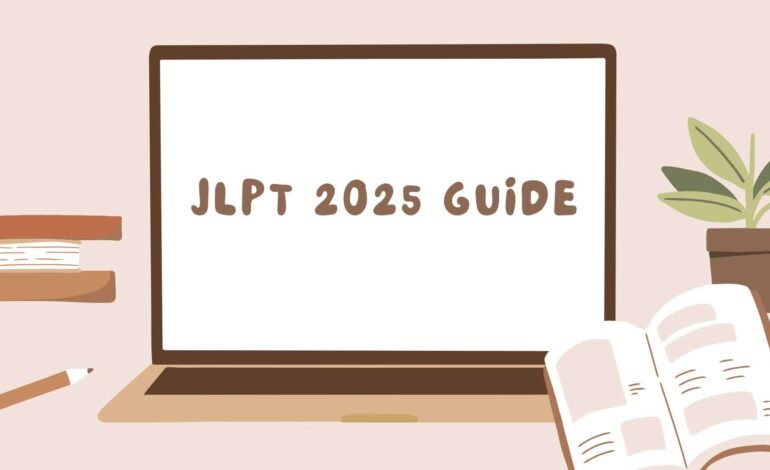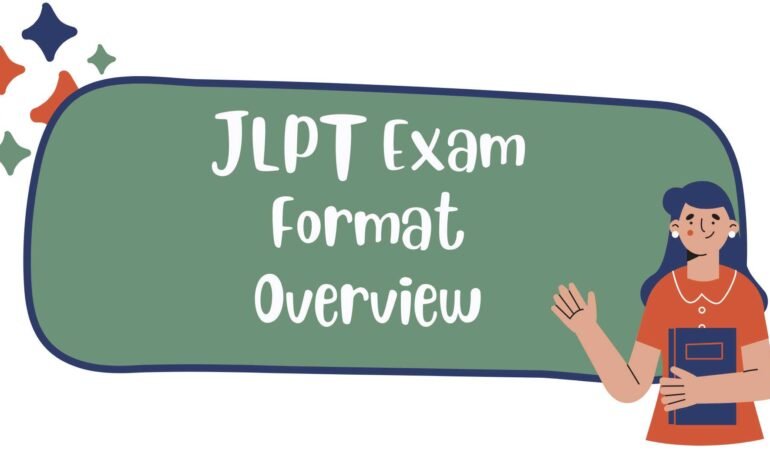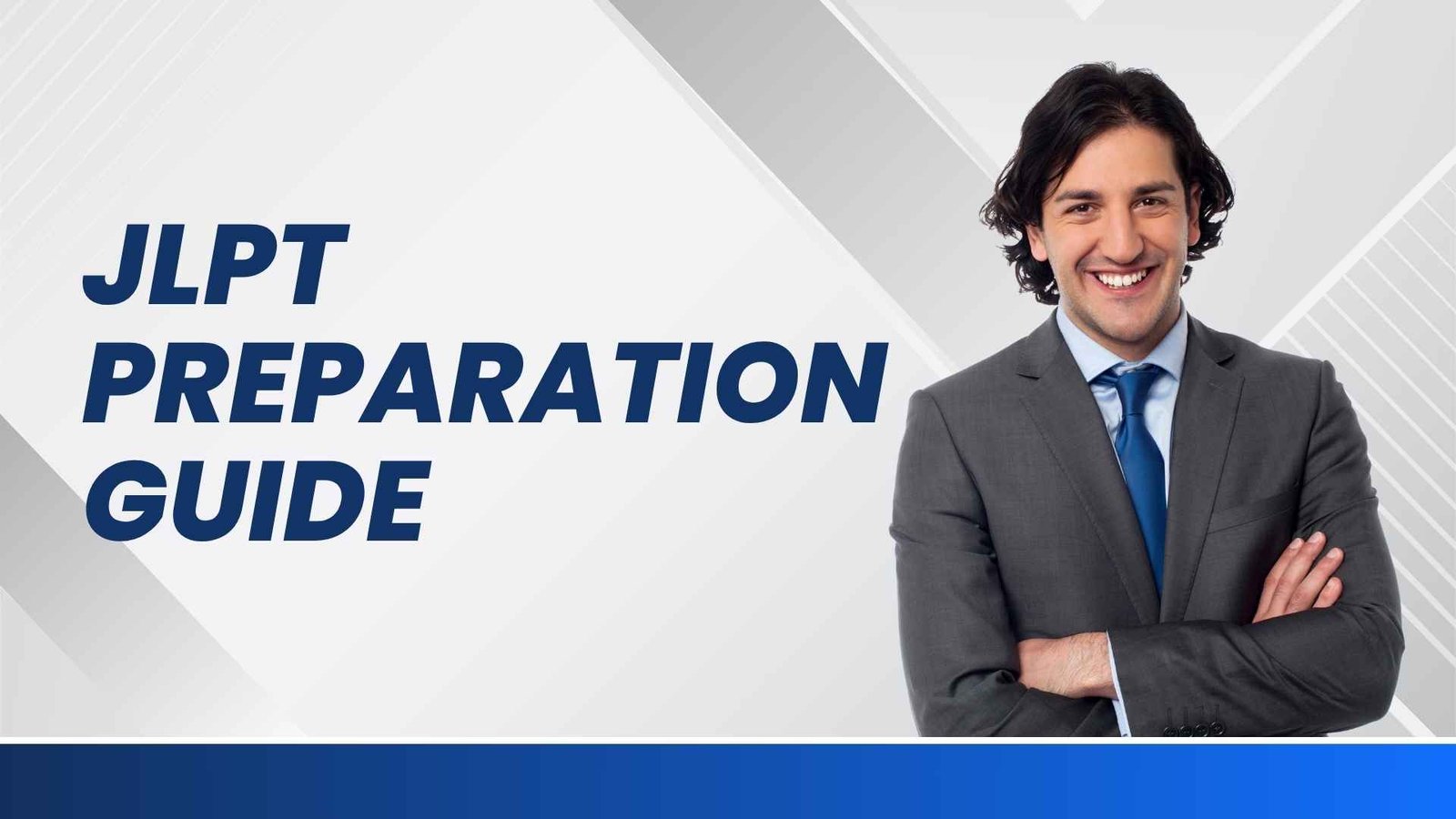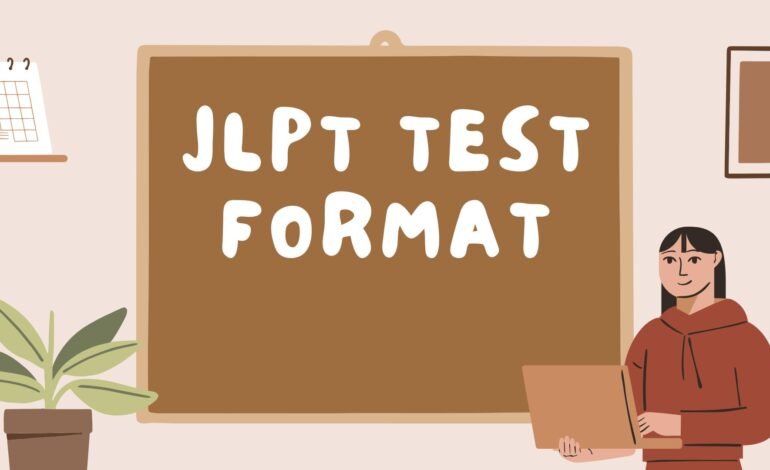
JLPT Test Format for All Levels (N5 to N1): Structure and Time Division
If you’re preparing for the JLPT (Japanese-Language Proficiency Test), understanding the test format is just as important as learning kanji or grammar. The JLPT test format is designed to assess your practical Japanese skills across listening, reading, and language knowledge — but it varies depending on the level you choose, from N5 (basic) to N1 (advanced).
In this guide, we break down the JLPT test format, explain the structure of each level, and share the time division for each section — so you can prepare smart and perform your best on exam day.
What is the JLPT Test Format?
The JLPT (Japanese-Language Proficiency Test) is a paper-based, multiple-choice exam designed to evaluate your practical command of the Japanese language across three key areas:
- Language Knowledge – including vocabulary and grammar
- Reading – understanding written Japanese in various contexts
- Listening – comprehending spoken Japanese in everyday and formal settings
While all five levels — N5, N4, N3, N2, and N1 — follow this general structure, each level varies in terms of question difficulty, section length, and time allocation. The higher the level, the more complex the content and the longer the duration of the test.
Preparing for JLPT next year? Don’t miss our JLPT 2025 guide — everything you need to know in one place.
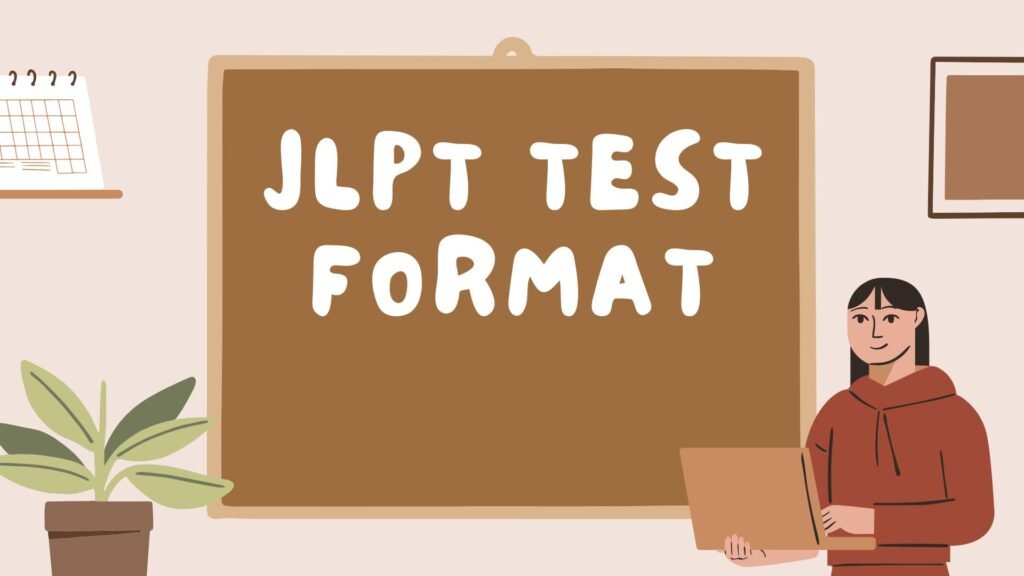
JLPT N5 Test Format
Ideal for: First-time learners and Japanese language beginners
If you’re just starting your journey in Japanese, JLPT N5 is the perfect level to begin with. It covers foundational skills that help you understand basic everyday Japanese.
Sections Covered:
- Language Knowledge (Vocabulary)
- Language Knowledge (Grammar) + Reading
- Listening
⏱ Time Allocation:
- Vocabulary: 25 minutes
- Grammar + Reading: 50 minutes
- Listening: 30 minutes
- 🕒 Total Duration: 105 minutes
Test Focus:
JLPT N5 evaluates your ability to:
- Recognize and use hiragana, katakana, and basic kanji
- Understand simple phrases, daily expressions, and elementary grammar
- Follow short conversations and familiar spoken content at a slow pace
This level is all about building a strong foundation in the Japanese language and gaining confidence in basic communication.
Want to score high on JLPT’s audio and text sections? Check out our comprehensive guide on the JLPT Reading and Listening Sections for targeted strategies and practice tips.
JLPT N4 Test Format
Ideal for: Learners with a basic grasp of Japanese who want to expand their practical understanding
JLPT N4 is designed for those who have already completed beginner-level Japanese (N5 or equivalent) and are ready to handle more complex sentence structures and vocabulary in daily life.
Sections Included:
- Language Knowledge (Vocabulary)
- Language Knowledge (Grammar) + Reading
- Listening
Time Division:
- Vocabulary: 30 minutes
- Grammar + Reading: 60 minutes
- Listening: 35 minutes
- 🕒 Total Duration: 125 minutes
Test Focus:
JLPT N4 measures your ability to:
- Read and understand short passages and everyday written materials
- Grasp basic grammar patterns, sentence forms, and particle usage
- Follow simple spoken conversations, announcements, and dialogues spoken at a natural but slow pace
- Comprehend content related to daily activities, shopping, directions, and social interactions
This level helps you transition from beginner to intermediate proficiency and builds your confidence for practical conversations and reading comprehension.
Aiming to clear JLPT on your first try? Read our guide on how to pass JLPT in the first attempt for proven tips and strategies.
JLPT N3 Test Format
Ideal for: Learners progressing toward fluency and aiming to handle everyday Japanese with more confidence
JLPT N3 bridges the gap between basic and advanced Japanese. It introduces more complex grammar and vocabulary while testing your comprehension in both formal and informal settings.
Sections Included:
- Language Knowledge (Vocabulary + Grammar) + Reading
- Listening
Time Allocation:
- Language Knowledge + Reading: 70 minutes
- Listening: 40 minutes
- 🕒 Total Duration: 110 minutes
Test Focus:
The JLPT N3 exam checks your ability to:
- Understand written materials such as signs, letters, emails, and magazine articles
- Grasp grammar structures used in moderately complex sentence patterns
- Follow spoken conversations, announcements, and dialogues that reflect real-world situations
Passing N3 demonstrates that you can comfortably handle communication in a variety of everyday situations — whether you’re studying, traveling, or working in a Japanese-speaking environment.
Finished the JLPT? Discover what comes next in our guide to post JLPT exams — from certification use to next-level opportunities
JLPT N2 Test Format
Ideal for: Advanced learners, job applicants in Japanese companies, and those pursuing higher education in Japan
JLPT N2 is a crucial milestone for those who want to live, study, or work in Japan. It proves you can handle complex language tasks, both in spoken and written formats, and is often a requirement for professional roles.
Sections Included
- Language Knowledge (Vocabulary + Grammar) + Reading
- Listening
Time Allocation:
- Language Knowledge + Reading: 105 minutes
- Listening: 50 minutes
- 🕒 Total Duration: 155 minutes
Test Focus:
JLPT N2 evaluates your ability to:
- Comprehend long-form reading materials such as news articles, reports, and essays
- Understand logical arguments, sentence connections, and advanced grammatical structures
- Follow spoken conversations at near-native speed, including business meetings, interviews, and public announcements
- Interpret context in both formal and informal communication
Achieving N2 certification is a major advantage for anyone seeking employment in Japan or applying to Japanese universities, as it demonstrates the language skills necessary for real-world success.
Ready to register for JLPT? Follow our step-by-step JLPT exam registration guide to avoid mistakes and secure your spot with ease.
JLPT N1 Test Format
Ideal for: Proficient Japanese users aiming for academic, research, or high-level professional roles
JLPT N1 is the highest and most challenging level of the Japanese-Language Proficiency Test. It assesses your ability to understand complex and abstract Japanese, both in written and spoken forms, at a near-native level.
Sections Included:
- Language Knowledge (Vocabulary + Grammar) + Reading
- Listening
Time Allocation:
- Language Knowledge + Reading: 110 minutes
- Listening: 60 minutes
- 🕒 Total Duration: 170 minutes
Test Focus:
JLPT N1 is designed to evaluate your ability to:
- Understand advanced vocabulary, idiomatic expressions, and sentence structures used in formal settings
- Comprehend academic papers, opinion pieces, editorials, and technical content
- Follow complex spoken Japanese in lectures, panel discussions, and rapid dialogues without subtitles or visual aids
- Interpret tone, intent, and context across various professional and academic environments
Achieving JLPT N1 demonstrates near-native fluency and opens doors to research positions, government jobs, and high-level translation or interpretation roles in Japan and globally.
Ready to boost your JLPT readiness? Discover proven strategies in our How to Prepare for JLPT guide and study smarter for success.
Key Points to Remember About JLPT Test Format
Let’s quickly go over some essential takeaways to keep in mind while preparing for the JLPT — no matter which level you’re aiming for.
- No speaking or writing – The test only includes listening, reading, vocabulary, and grammar.
- Multiple-choice only – Every question has four options.
- Different difficulty levels – N5 and N4 focus more on daily communication; N3–N1 test abstract and formal Japanese.
- Passing requires both overall score and sectional minimums – Missing sectional thresholds may lead to failure even with a good total score.
How to Use This Format for Better Preparation
Now that you understand the JLPT test format, structure your study plan accordingly:
- Time yourself during mock tests to build stamina.
- Use past question papers to practice under real conditions.
- Focus on listening skills, especially for N3 and above.
- Combine vocabulary and grammar studies to ace the Language Knowledge section.
- Use apps and official books like Shin Kanzen Master or JLPT Official Workbooks for level-specific practice.
Test Day Tip:
Arrive at your JLPT exam center well in advance to avoid any last-minute stress. Don’t forget to carry your admit card, a valid photo ID, and the necessary stationery (pencils, erasers, etc.).
Being familiar with the JLPT test format ahead of time will help reduce anxiety and allow you to manage your time more efficiently during the exam.
Curious about JLPT tiers and topics? Dive into our full JLPT exam levels and content guide to understand what each level tests and how to prepare effectively.
Conclusion
Understanding the JLPT test format is the first step to clearing any level successfully. Whether you’re starting with N5 or aiming for the elite N1, knowing what to expect will help you plan better and stay confident. Don’t just study harder — study smarter by aligning your efforts with the format, timing, and structure of your chosen JLPT level.
FAQs – JLPT Test Format
Q1. Is the JLPT the same for all levels?
No, each level (N5 to N1) has different time limits, question complexity, and vocabulary/grammar scope.
Q2. Does the JLPT include speaking or writing?
No. The JLPT is strictly a multiple-choice exam covering listening, reading, vocabulary, and grammar only.
Q3. Can I skip levels (e.g., go from N5 to N3)?
Yes! You can take any level directly without clearing the previous one. However, higher levels are significantly more difficult.
Q4. How is the JLPT scored?
Each level has a total of 180 points. You need to pass both the overall score and the minimum section scores.
Q5. What’s the hardest part of the JLPT?
For many students, listening and time management during the reading section are the toughest, especially in N2 and N1.

